Last Updated on: 4th January 2024, 04:32 pm
Belem is part of Lisbon, Portugal. The fact that Belem district is not in the city center doesn’t make it less beautiful. Besides, this westernmost neighborhood of Lisbon is extremely important from history standpoint.
Belem played a significant role in the Age of Discovery, as it was from here that many famous explorers, including Vasco da Gama, set sail on their voyages. If you visit the Belem district, make time to see the Maritime Museum. You won’t regret this decision, as the Museu de Marinha is home to amazing artifacts, ocean navigation tools, historical ship models, and many other maritime exhibits worth seeing. If you spend 4 days in Lisbon, one of them should include Belem.
Belem can be a romantic spot, perfect for sunset photos. Pair your photos with some of these couple travel captions and share them on your social media.
Main Topics of Belem District, Lisbon: Torre de Belem, Museums & Other Landmarks
- Discover Belem, Long After the Age of Discovery
- Main Attractions of the Belem District & Things To Do in Belem
- 1. Belem Tower
- 2. The Monument of Discoveries, Padrao dos Descobrimentos
- 3. Jeronimos Monastery
- 4. Igreja de Santa Maria de Belem
- 5. The Maritime Museum in Belem
- 6. The Coach Museum
- 7. The Berardo Collection Museum
- 8. The Botanical Garden
- 9. The National Museum of Ethnology
- 10. The National Museum of Ancient Art
Discover Belem, Long After the Age of Discovery
The Age of Discovery, also known as the Age of Exploration, was a period of European history that began in the late 15th century and lasted until the early 17th century. During this time, European explorers set out to discover new trade routes, seek out new sources of resources and wealth, and expand their knowledge of the world. Portugal and Spain had the great advantage of being on the ocean shore.
The most significant figures of the Age of Discovery were the explorers Christopher Columbus, Vasco da Gama, Ferdinand Magellan, and Francisco Pizarro. Columbus, sailing for Spain, is credited with discovering the New World in 1492 when he landed in the Caribbean islands. The Portuguese Vasco Da Gama was the first European explorer to reach India by sea in 1498, opening up a sea route from Europe to the East. Magellan, also sailing for Portugal, completed the first circumnavigation of the world in 1522. Pizarro, sailing for Spain, was responsible for the conquest of the Inca Empire in South America.
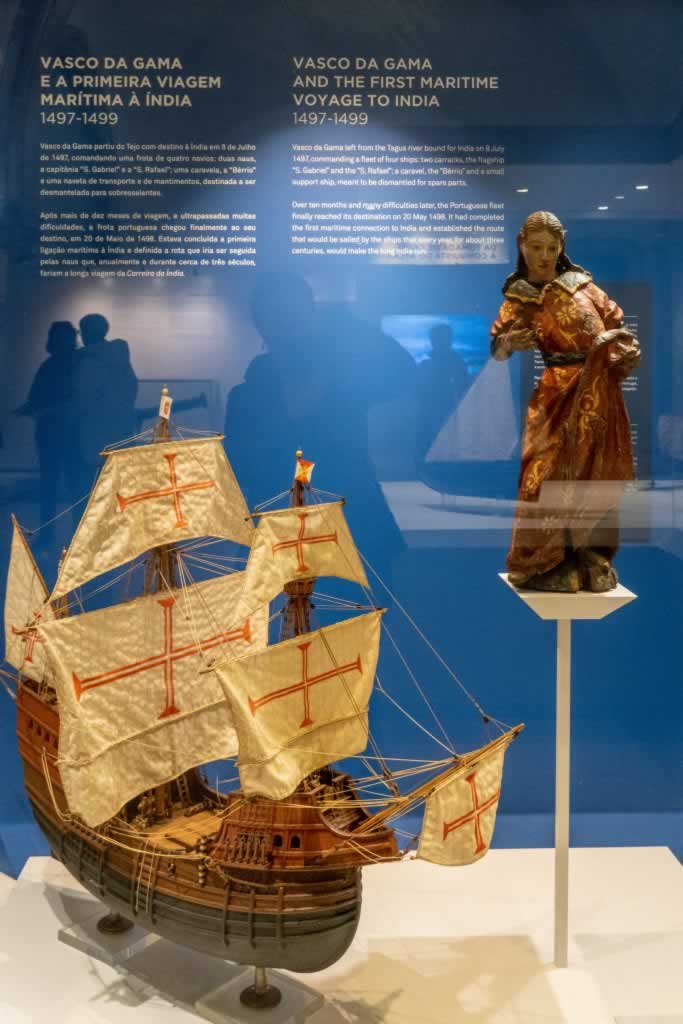
Vasco da Gama and the first maritime voyage to India 1497 – 1499
The Age of Discovery had a profound impact on the world, as it led to the colonization of the Americas and the establishment of trade routes between Europe and the East. It also led to the spread of Christianity and European culture to the Americas, Africa, and Asia. The Age of Discovery also led to the exchange of plants, animals, and ideas between the different continents, which had a significant impact on the development of global culture and cuisine.
Unfortunately, the Age of Discovery had its drawbacks such as the forced migration of millions of enslaved people from Africa to the Americas, the destruction of indigenous cultures, and the beginning of the transatlantic slave trade. However, the main topic of this article is the beautiful Belem district and its worth from tourist point of view. Let’s see some of the best things to do in Belem.
Main Attractions of the Belem District & Things To Do in Belem
Among the best things to see in Belem there are the Tower of Belem (Torre de Belem, in Portuguese), The Monument of Discoveries (Padrao dos Descobrimientos), the Maritime Museum (Museu de Marinha), Jeronimos Monastery, and the Archeology Museum.
1. Belem Tower
One of the most iconic landmarks in Belem is the Tower of Belem, a UNESCO World Heritage Site. Built in the 16th century as a fortress to guard the entrance to the port of Lisbon, the tower is a beautiful example of Manueline architecture. Torre de Belem sits at short distance from the shore. You can reach it via a wooden bridge.
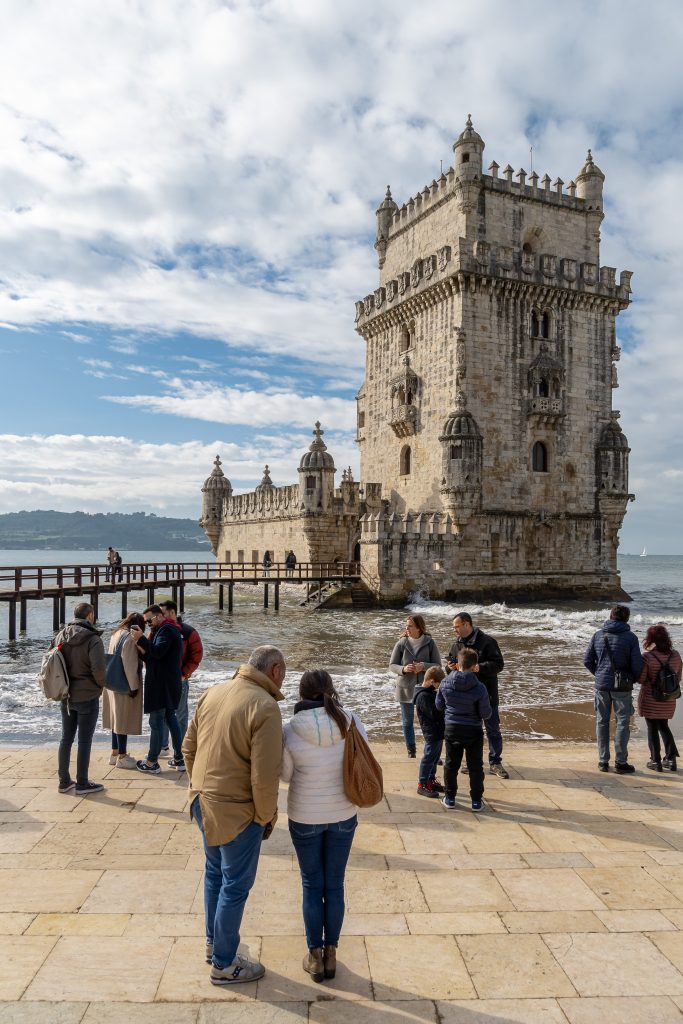
Entering the tower requires you to wait in line for permission from the staff. You’ll have to put up with the crowds, so make sure you’re OK with that. If not, you can take photos of the exterior and enjoy your day watching other tourists passing by. You’ll miss, though, the beautiful views from the top deck of the Belem Tower.
How To Get to Belem Tower from Lisbon’s City Center
Torre de Belem is located about 4km west of Lisbon city center. If you enjoy walking, you can take a waterfront stroll from Praca do Comercio, Terreiro do Paso, or Cais do Sodre to Belem. Expect to walk for at least one hour, though.
If walking is not your cup of tea, check out these faster ways to travel from Lisbon to Belem:
- The fastest way to get to Torre de Belem from Lisbon is by train. Take the train from Cais do Sodre to the Belem stop.
- A slower but more scenic way to get to the Belem Tower from downtown Lisboa is by bus or tram. You can take bus 15 or tram 15 from the city center to the Belem stop.
Belem Tower Tickets:
- Tickets can be purchased at the ticket office on the day of your visit or online. Click here to buy your Belem Tower ticket at the price of today.
- Prices vary depending on the type of ticket and if you choose to visit the tower only or with a guided tour. The above link works for the entry ticket only. If you want a ticket with self-guided audio tour, click here.
The entrance to Belem Tower is free with your Lisbon Card. You’ll need to go to the ticket office in the Belem park, in order to get your free entry ticket. Click here to get your Lisbon card now and enjoy free entrance to Torre de Belem and to Jeronimos Monastery (among many other attractions and free public transport).
Belem Tower Visiting Hours:
- The tower is open daily from 9:30 AM to 6:00 PM (last ticket sale 5:00 PM; last entry 5:30 PM).
- It is closed on Monday and January 1st, Easter Sunday, May 1st, June 13th and December 25th.
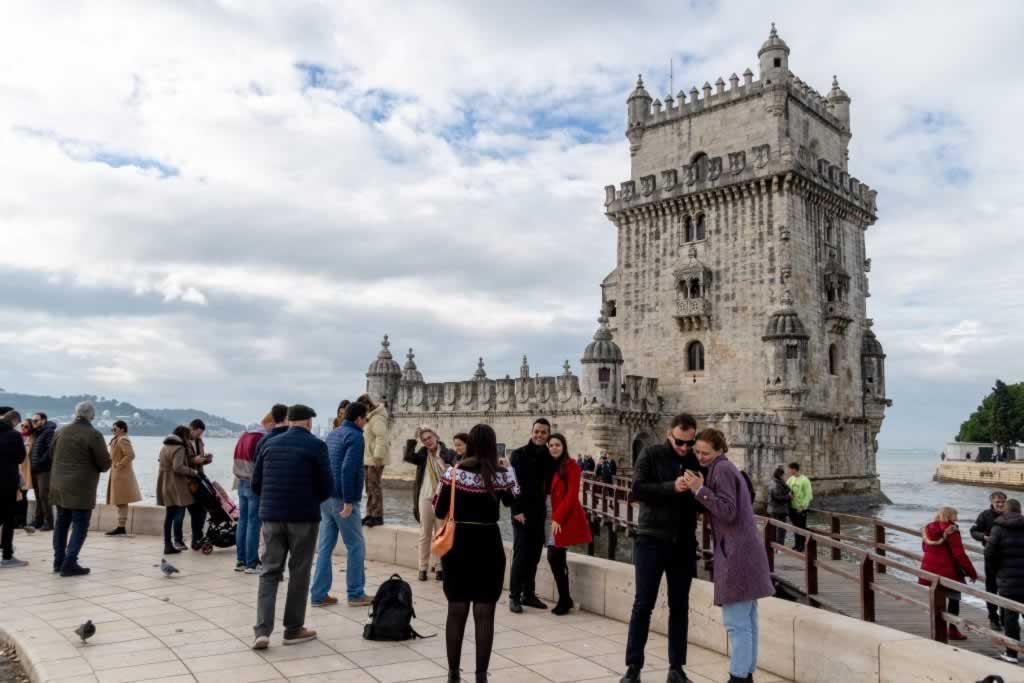
This was not a busy day at Belem and still it was hard to take a photo of Torre de Belem without people around
Is It Worth Climbing Inside the Tower of Belem?
In a word, yes.
Climbing to the top of Torre de Belem enables you to enjoy panoramic views of this area of Lisbon, the waterfront promenade and the River Tagus.
Inside the tower, you will find exhibits that allow you to gain a better understanding of the history of Torre de Belem and its significance in the Age of Discovery.
The first three floors are three “apartments” – Governor’s Room, Kings’ Room, and Audience Room. The top floor of the Belem Tower hosts a chapel dedicated to Our Lady of Safe Homecoming, which was built to protect sailors and explorers as they set out on their voyages. All interiors are austere, but they are well-worth visiting.

This is the lower deck of Torre de Belem seen from the top deck of the tower
The spiral staircase that connects the floors is very narrow. This is the reason why the Belem Tower staff will make you wait to take turns to climb and descend. If you want to avoid the crowds, go see Torre de Belem early in the day.
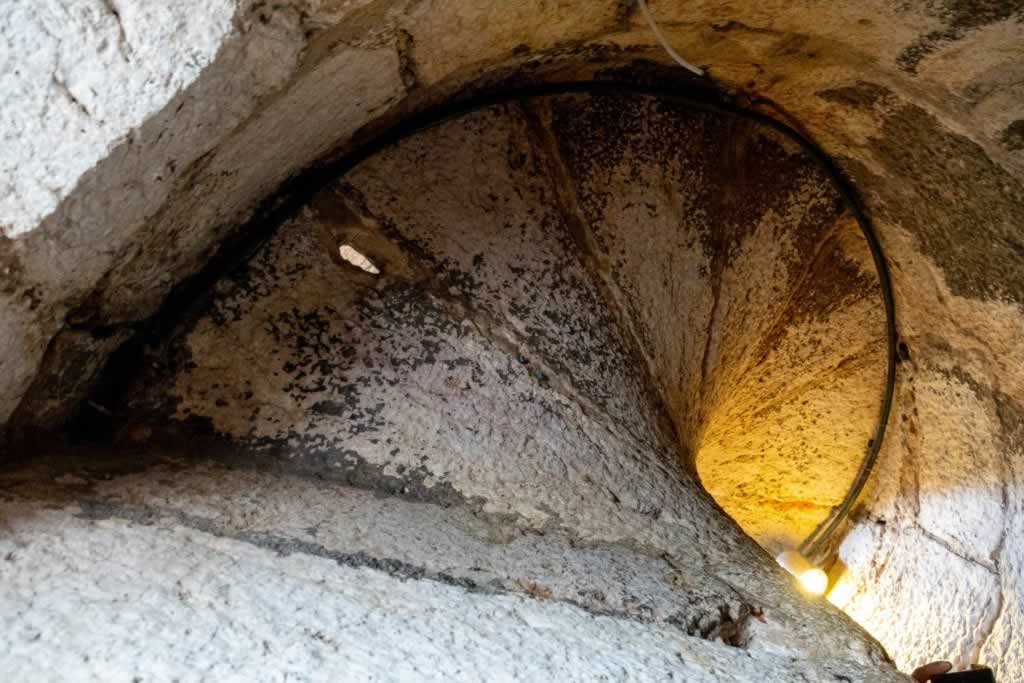
This is the narrow spiral staircase inside the Belem Tower – I took a photo of the ceiling, because the actual stairway was full of people.
I recommend you to check the Torre de Belem official website for the most recent information regarding visiting hours and ticket prices. It’s also recommended to book the tickets in advance, as it can be crowded during peak season.
2. The Monument of Discoveries, Padrao dos Descobrimentos
The Monument of Discoveries, Padrao dos Descobrimentos, rising on the back of Tagus river, honors the Age of Discovery and the great explorers who had the bravery to sail troubled oceans to discover new worlds and to take humankind to the next level.
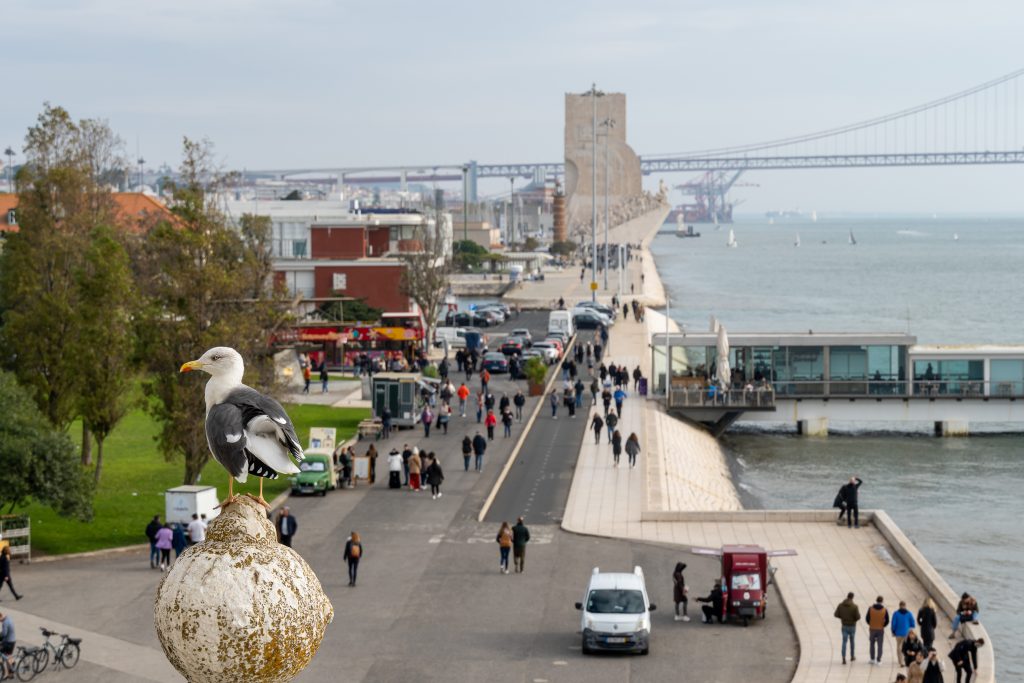
Padrao dos Descobrimientos – I took this photo from the top terrace of Torre de Belem – my focus was the seagull, but you can see the Monument of Discoveries in the background
Constructed from limestone and adorned with intricate carvings and sculptures, the Monument of Discovery stands at a massive 52 meters tall. It is considered one of the most significant architectural achievements of its time. At its base, the monument features a large carved stone map of the world, highlighting the extensive reach of Portuguese exploration and trade.
One of the most notable features of the Monument of Discovery is its central statue, which depicts King Manuel I himself, standing tall and proud with a sword in hand and a nautical chart at his feet. This statue represents the King’s support and encouragement of Portuguese explorers and the nation’s maritime ambitions.
In addition to the statue of King Manuel, the monument features sculptures of numerous other figures, including the Portuguese explorers Vasco da Gama and Ferdinand Magellan, as well as various allegorical figures representing commerce, navigation, and the arts. These sculptures serve to commemorate the accomplishments of Portuguese explorers and the impact their journeys had on the world. I love how all of those statues have their eyes pointed towards the sea, suggesting the thirst for exploration, knowledge and adventure.
Padrao dos Descobrimentos is also significant for its historical context. Built during the height of Portugal’s power as a colonial empire, it symbolizes the nation’s ambition and confidence as a world power. The monument was a statement of Portugal’s dominance on the seas and its ability to reach far-off lands and establish colonies, thereby shaping the world as we know it today.
You can climb inside the monument to go to the observation deck that offers a scenic panorama of Belem. The entrance price is 6 Euro, but you can get a 30% discount with your Lisbon Card. Click here to get your Lisbon card now.
3. Jeronimos Monastery
Another famous attraction in Belem is the Jeronimos Monastery, also a UNESCO World Heritage Site. The monastery, built in the 16th century, is considered one of the greatest examples of the Manueline style of architecture.
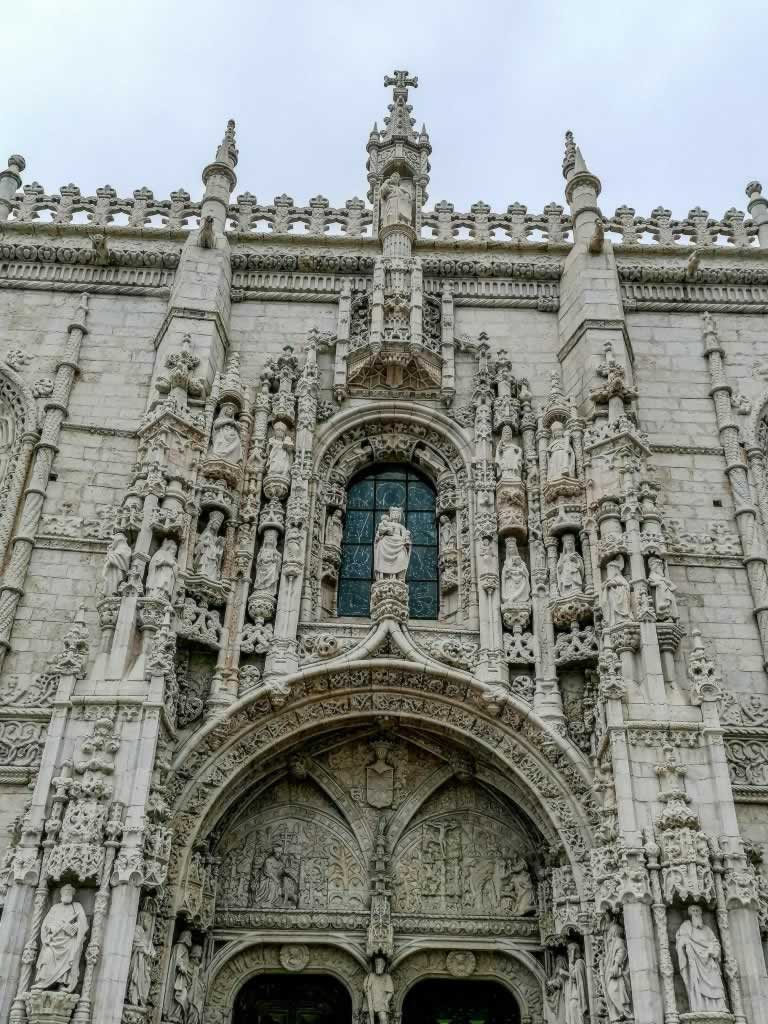
The most striking feature of Jeronimos Monastery is its intricate stonework, which includes delicate sculptures and carvings depicting scenes from Portuguese maritime history, biblical stories, and scenes from the life of Vasco da Gama. I could spend hours staring at those carved pillars and doors.
Jeronimos Monastery is free to visit with the Lisbon Card. If you don’t have one, click here to get it before you go to Portugal.
4. Igreja de Santa Maria de Belem
Near the Jeronimos Monastery you’ll find the Church of Santa Maria de Belem, commonly known as the Igreja de Santa Maria. This church, which is located in the same complex as the Jeronimos Monastery, was built in the same style as the monastery, incorporating elements of the Manueline architectural style and featuring intricate stonework and carvings.
Visitors can easily visit both the Jeronimos Monastery and the Church of Santa Maria de Belem as part of the same visit. The complex is open to the public, and visitors can tour the interior of both buildings, admire their stunning architecture, and learn about their rich history.
Next to Jerónimos Monastery (also known as Hieronymites Monastery) there’s the Archaeology Museum and the Maritime Museum.
In addition to its historical landmarks, Belem is also known for its delicious pastries, particularly the famous Pasteis de Belem, a type of custard tart that originated in the area. Visitors can sample these treats at the original factory where they are made, the Antiga Confeitaria de Belem. In fact, when I visited Belem, I found a huge line of people in front of this patelaria, so I kept walking on that very street. Within a couple of minutes, I found another pastelaria selling pasteis de Nata, the delicious custard tarts I can never get enough of. I gobbled two of those lovely tarts with a coffee right away.
5. The Maritime Museum in Belem
The Maritime Museum in Belem, Portugal is a must-visit for anyone with an interest in nautical history. Located in the historic neighborhood of Belem, the museum is housed in a former maritime customs house that was built in the 19th century. The museum is designed to showcase the rich maritime heritage of Portugal and its impact on the world.
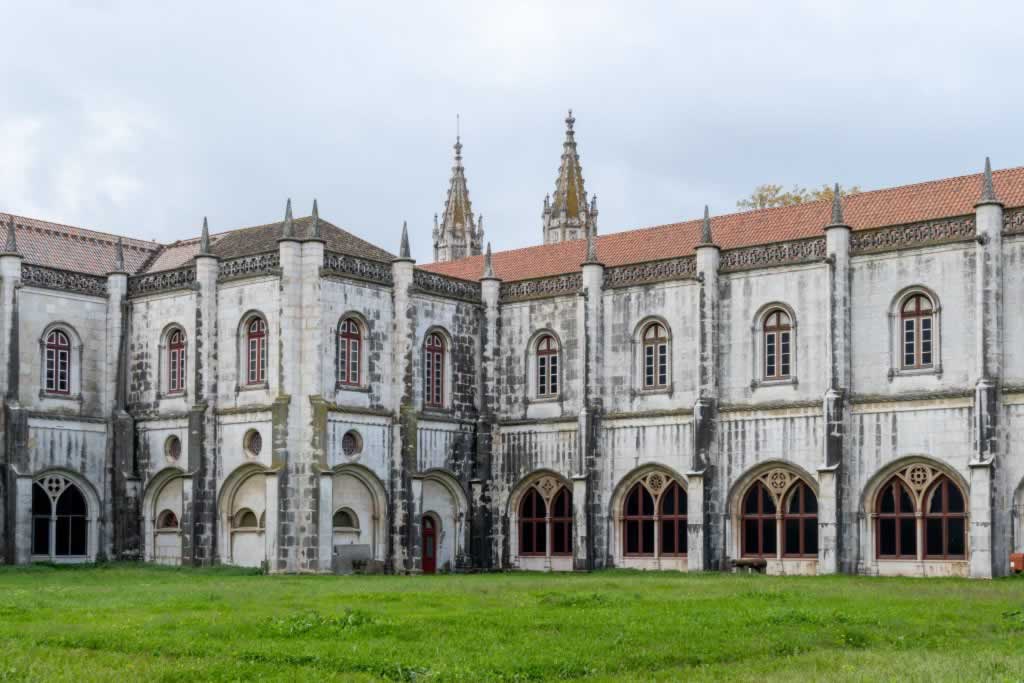
This is the backyard of the Maritime Museum – You can see the two towers of Jeronimos Monastery
The Maritime Museum is perfect for history buffs, families, and anyone interested in learning about the maritime history of Portugal and its impact on the world.
I was fascinated by the exhibits, which include models of famous Portuguese ships, paintings, maps, and navigational instruments. The museum’s collection includes artifacts from the Age of Discovery, when Portuguese explorers charted new territories and opened up sea routes to the Far East and the New World.

This is one of my top favorites in the maritime museum
Another highlight of the museum is the collection of maps and navigation instruments, including astrolabes, compasses, and sextants, that were used by Portuguese navigators to chart their course across the seas. These artifacts provide a fascinating glimpse into the technical skills and knowledge that was required to navigate the high seas during the Age of Discovery.
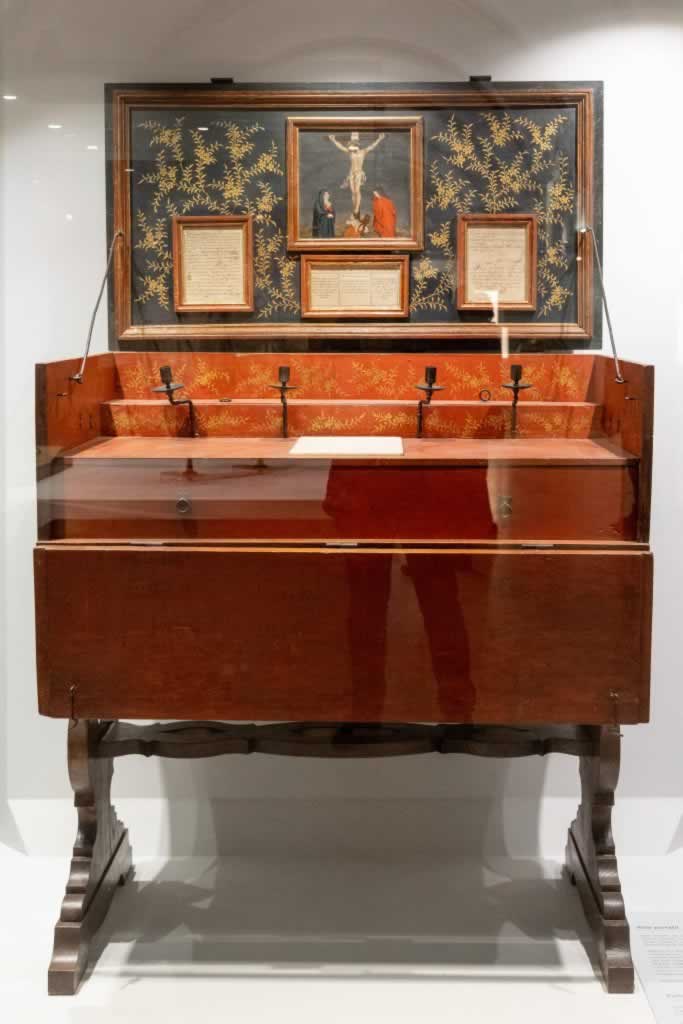
The portable altar is another interesting item you’ll see in the Maritime Museum of Belem. Staying close to God was very important, particularly during storms at sea
The Maritime Museum is open every day except for Mondays, from 10:00 a.m. to 6:00 p.m. I think I spent about 1-2 hours inside. There are many things to see, so make sure you do have enough time.
6. The Coach Museum
The Coach Museum in the Belem district of Lisbon, Portugal showcases a unique collection of horse-drawn carriages from the 16th to the 19th century. It is one of the largest and most comprehensive collections of its kind in the world, featuring over 60 elaborate carriages, coaches, and sleighs, along with harnesses, liveries, and other horse-related artifacts.
The museum is housed in a beautiful 18th-century palace and provides a glimpse into the grandeur and elegance of the past, as well as the historical and cultural significance of horse-drawn transportation. The Coach Museum is a must-visit for history and art lovers, as well as anyone interested in the evolution of transportation and the role it played in shaping society. Click here to visit the official website of this museum.
7. The Berardo Collection Museum
This modern and contemporary art museum features works by some of the most important artists of the 20th and 21st centuries, including Salvador DalÃ, Pablo Picasso, and Joan Miró. Here’s the official website of the museum, where you can find out the current visiting hours and ticket prices as of today, [todaysdate].
8. The Botanical Garden
This beautiful garden is located in the heart of Belem and features a wide variety of plants and flowers from around the world. It is located between the Jeronimos Monastery and the Belem Palace. I read about it before visiting Lisbon, but I haven’t managed to see it during my time in Belem.
The drawback of visiting Lisbon in December is the high rain risk. My day in Belem was a rainy one. This is how I got to spend a lot of time in museums.
9. The National Museum of Ethnology
This museum is dedicated to the study of the people and cultures of Portugal and its former colonies. It features a collection of artifacts, textiles, and other materials from around the world.
10. The National Museum of Ancient Art
This museum features a collection of paintings, sculptures, and decorative arts from the 12th to the 18th century.
I’m still to visit these last two museums on the list the next time I’ll get to the Belem district. For now, I feel they should be part of the list of the best things to do in Belem.
- Ramla Beach Gozo, Maybe the Best in Malta - April 9, 2024
- Where To Go on Honeymoon: List of the Most Interesting Countries - April 9, 2024
- A Guide to Nepal Treks from India - April 5, 2024

